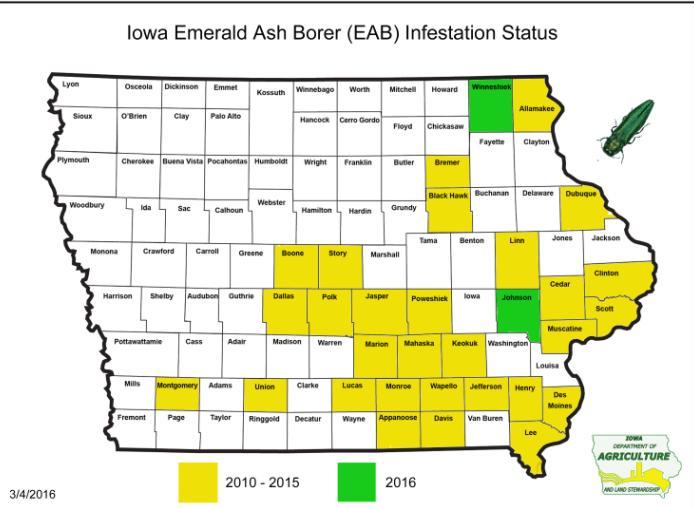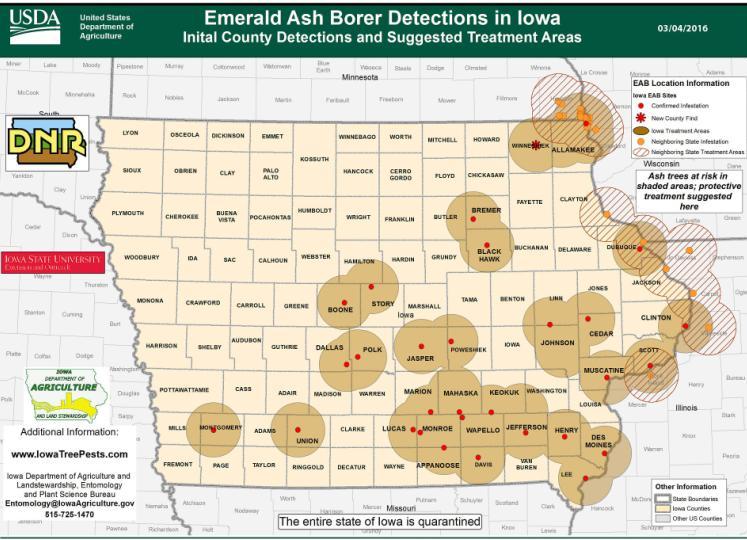EAB confirmed in another Iowa County
March 4th, 2016 by Ric Hanson
Officials with the Iowa Department of Natural Resources report the emerald ash borer (EAB), which has already been confirmed in nearly one-third of Iowa’s counties, has been discovered in Decorah. The destructive pest, native to Asia, feeds on and eventually kills infested ash tree. Winneshiek County has been added to the growing list of 31counties in Iowa that have confirmed EAB infestations.
The discovery marks the second county in Iowa where EAB has been found this year. Last month EAB was found on the University of Iowa campus. The exotic pest was first detected in Iowa back in 2010 in Allamakee County. EAB has spread to 25 states where it is responsible for decimating tens of millions of ash trees.
A consulting arborist was drawn to the tree in Decorah after noticing evidence of EAB damage. Further investigation revealed distinctive S-shaped galleries and an EAB larva (immature beetle) underneath the bark of the infested tree. The collected larva was sent to the USDA Systematic Entomology Laboratory where it was confirmed positive for EAB.
EAB infested ash trees include thinning or dying branches in the upper canopy, evidence of woodpecker activity, S-shaped feeding galleries under dead or splitting bark, D-shaped exit holes and water sprouts (along the trunk and main branches). Federal quarantines are in place to restrict the movement of hardwood firewood, ash logs, wood chips and ash tree nursery stock out of Iowa into non-quarantined areas of other states.
The Iowa EAB Team urges Iowans to use locally sourced firewood, burning it in the same county where it was purchased. Firewood is not only a means of transportation for EAB, but other tree-killing pests as well. At this calendar date, the window for all preventive treatments remains closed. If a landowner is interested in protecting a valuable and healthy ash tree within 15 miles of a known infestation, he or she should have landscape and tree service companies bid on work, review the bids and treat beginning spring 2016 (early April to mid-May).
The State of Iowa will continue to track the movement of EAB on a county-by-county basis. Before a county can be officially recognized as infested, proof of a reproducing population is needed and an EAB must be collected by a member of the Iowa EAB Team and verified by USDA entomologists.
To learn more about EAB and other pests that are threatening Iowa’s tree population, please visit www.IowaTreePests.com.





